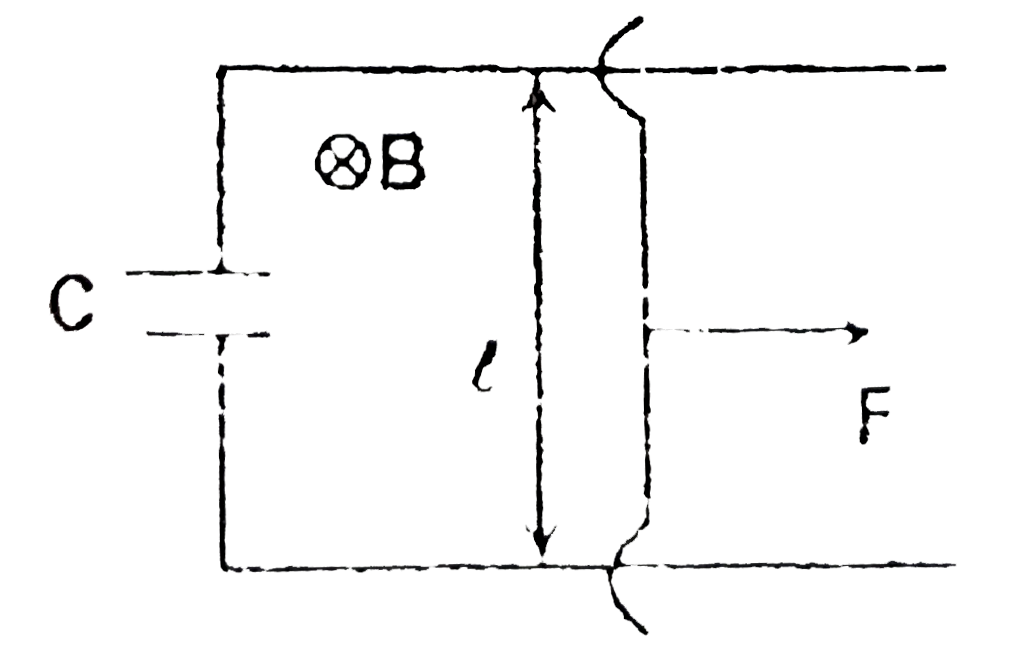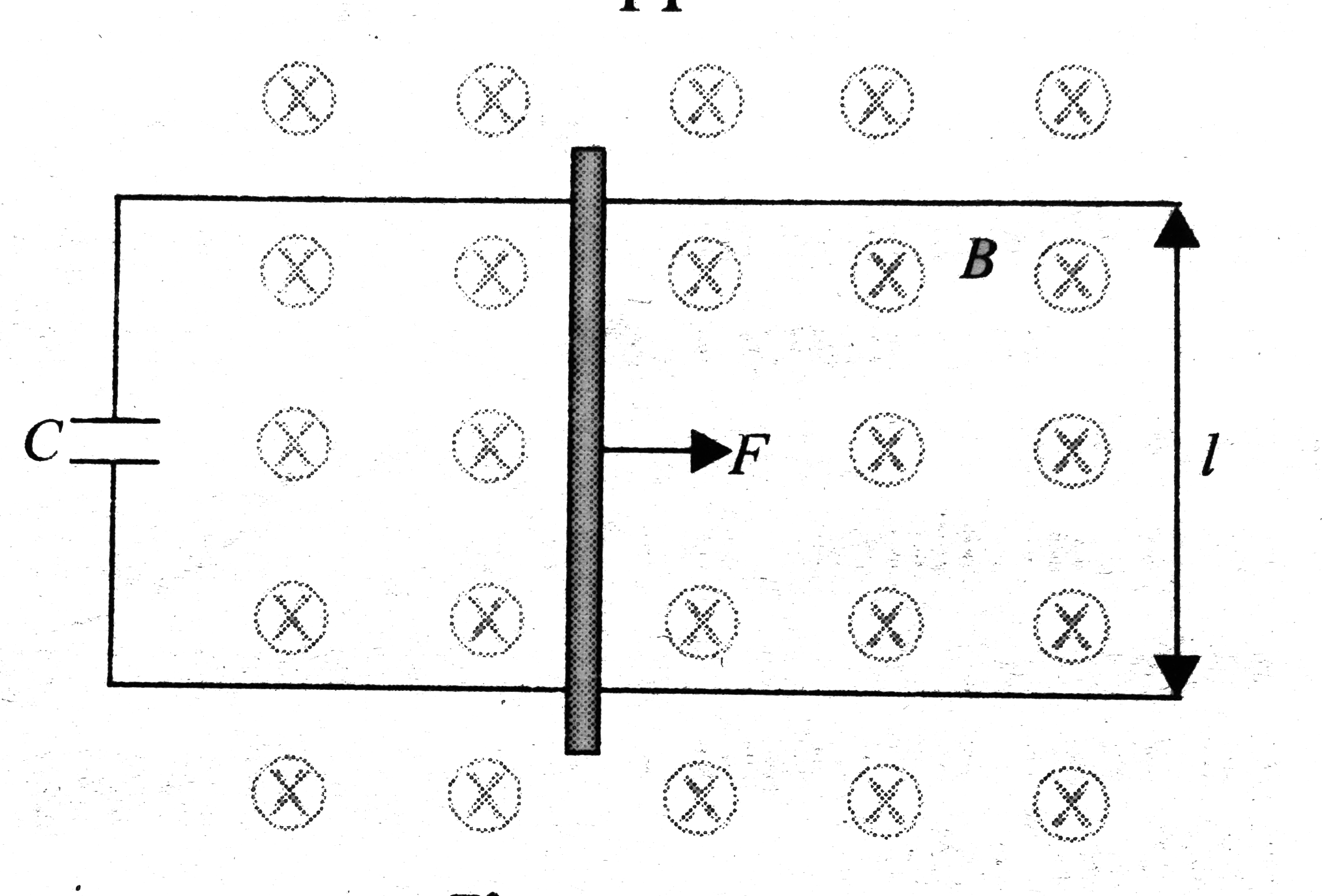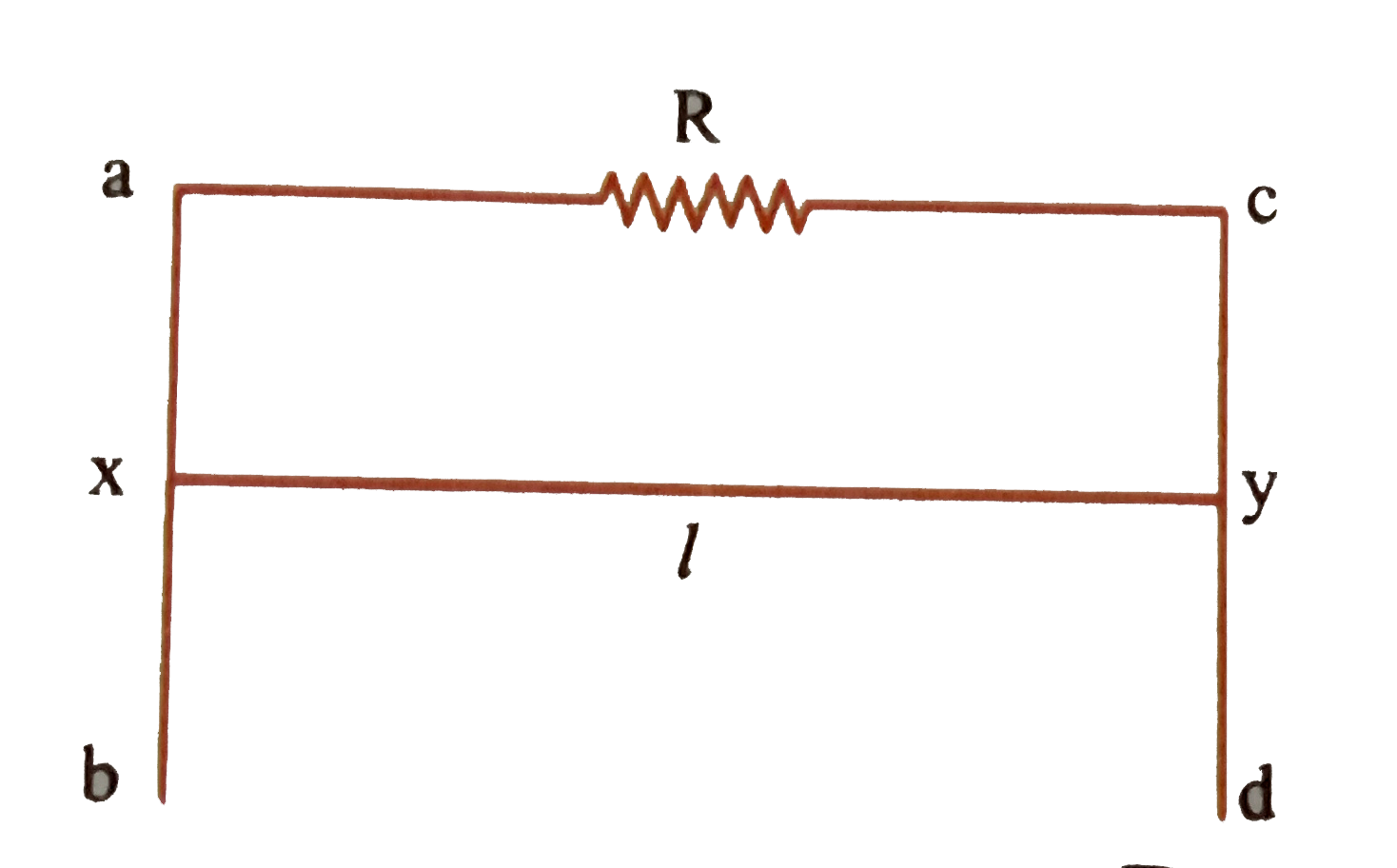A conductor of length l and mass m can slide without friction along two vertical rails AB and CD connected by a resistor R. The system is in homogeneous magnetic field of induction B perpendicular to ACBD.
How will the movable conductor move in the field of gravity, if the resistance of the conductor itself and the rails are negligible?

As conductor moves downward in magnetic field, then the area of loop changes due to which emf will be induced and its magnitude is given by E= Blv
where, B is magnetic field, I is length of conductor and v is velocity of conductor.
Now, current flowing through the conductor,
I=ER⇒I=BlvR
Due to presence of magnetic field, it will experience a force.
So , F=llBsin90∘
⇒F=(BlvR)lB
⇒f=B2l2vR ,
⇒F∝v
This force will act in upward direction. As the conductor moves downward due to gravity, then its velocity increases and force acting on it in upward direction will also increase, a stage will come when the force will be equal to its weight and after that it will move with terminal velocity.
Similar Questions
A conducting wire of length l and mass m can slide without friction on two parallel rails and is connected to capacitance C. The whole system lies in a magnetic field B and a constant force F is applied to the rod. Then
View SolutionA conducting wire of length l and mass m can slide without friction on two parallel rails and is connected to capacitance C. Whole system lies in a magnetic field B and a constant force F is applied to the rod. Then
 View Solution
View SolutionA conducting wire of length l and mass m can slide without friction on two parallel rails and is connected to capacitance C. Whole system lies in a magnetic field B and a constant force F is applied to the rod. Then
 View Solution
View SolutionA conducting wire of length l and mass m can slide without friction on two parallel rails and is connected to capacitance C. The whole system lies in amagnetic field B and a constant force F is applied to the rod . Then
 View Solution
View SolutionA conducting wire of length l and mass m can slide without friction on two parallel rails and is connected to capacitance C. The whole system lies in amagnetic field B and a constant force F is applied to the rod . Then
 View Solution
View SolutionA conductor of length l and mass m can slide without any friction along the two vertical conductors connected at the top through a capacitor. A uniform magnetic field B is set up ⊥ to the plane of paper. The acceleration of the conductor
 View Solution
View SolutionA conductor of length l and mass m can slide without any friction along the two vertical conductors connected at the top through a capacitor. A uniform magnetic field B is set up ⊥ to the plane of paper. The acceleration of the conductor
 View Solution
View SolutionA conducting wire xy of lentgh l and mass m is sliding without friction on vertical conduction rails ab and cd as shown in figure. A uniform magnetic field B exists perpendicular to the plane of the rails, x moves with a constant velocity of
 View Solution
View SolutionA conducting wire xy of lentgh l and mass m is sliding without friction on vertical conduction rails ab and cd as shown in figure. A uniform magnetic field B exists perpendicular to the plane of the rails, x moves with a constant velocity of
 View Solution
View SolutionA conducting wire xy of lentgh l and mass m is sliding without friction on vertical conduction rails ab and cd as shown in figure. A uniform magnetic field B exists perpendicular to the plane of the rails, x moves with a constant velocity of
 View Solution
View Solution

